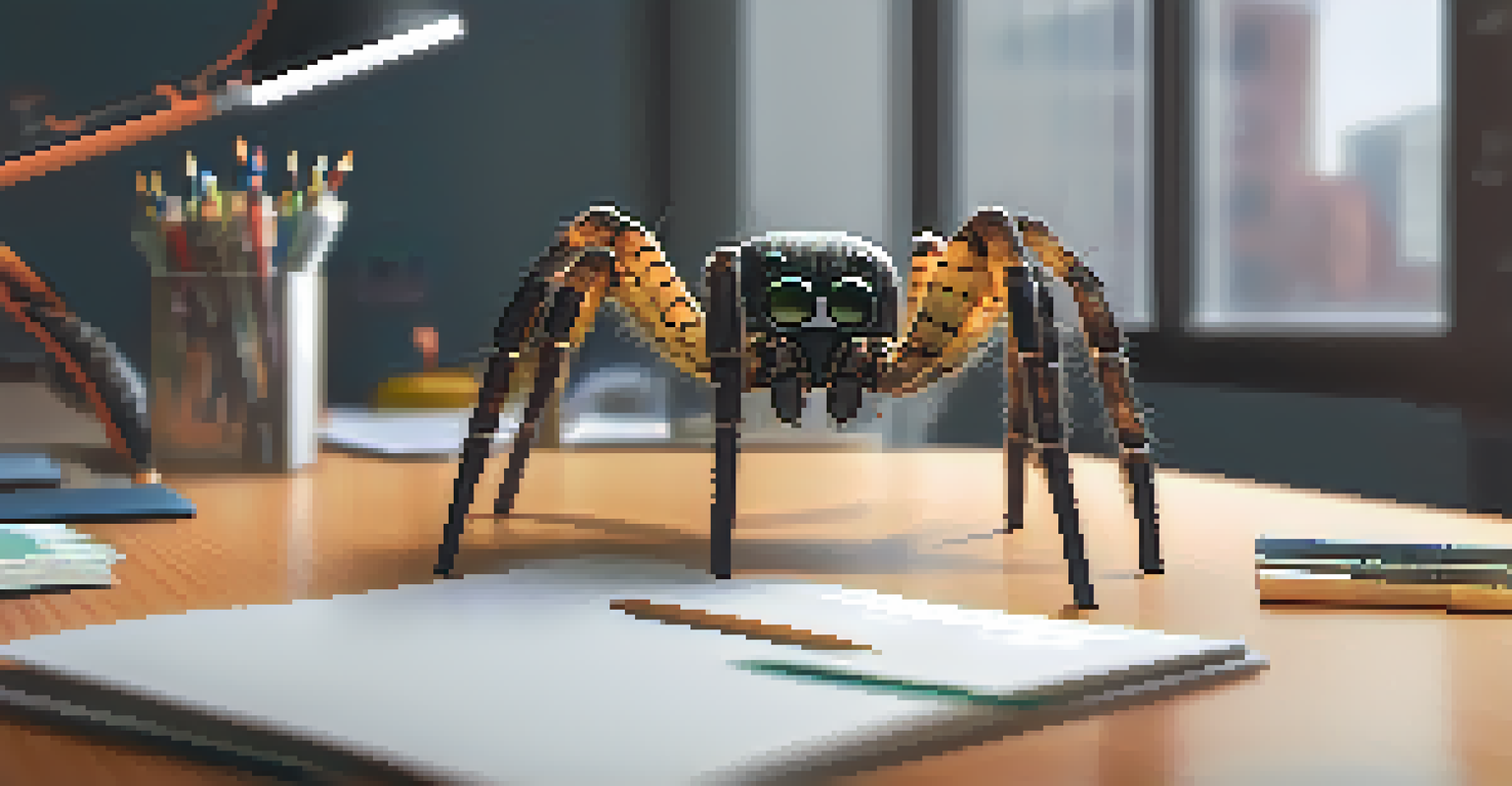The Art of Pranks: Humor as a Creative Expression

Understanding Pranks: More than Just a Joke
Pranks are often seen as lighthearted fun, but they can embody much more. They serve as a playful way to challenge norms and provoke thought, often using humor to create a shared experience. When done correctly, a prank can highlight absurdities in everyday life, making us laugh while also encouraging reflection.
Laughter is the shortest distance between two people.
For example, consider the classic whoopee cushion. While it may seem simple, this prank breaks the ice in social settings, reminding us that laughter can unite us. The element of surprise in a harmless prank evokes a reaction that brings people together, reinforcing social bonds.
Ultimately, pranks remind us of the importance of not taking life too seriously. They invite us to embrace spontaneity and creativity, allowing humor to flow freely in our interactions with others.
The Psychology Behind Pranking: Why We Laugh
At the heart of every prank lies a psychological principle: incongruity. This principle suggests that we find humor in unexpected twists or surprises. When a prank catches us off guard, our brains process the incongruity, leading to laughter as a natural reaction.

Consider the classic scenario where someone is blindfolded and led to believe they are about to taste a gourmet dish, only to find it’s something completely silly like whipped cream. This surprise creates a moment of joy and absurdity that resonates with our innate desire for fun.
Pranks Foster Connection and Joy
Humor in pranks can unite people and create shared experiences, turning mundane moments into delightful surprises.
Understanding this psychological aspect can enhance our appreciation for pranks. Rather than simply viewing them as tricks, we see them as playful expressions of creativity that tap into our human need for laughter and connection.
Creative Prank Ideas: Harnessing Your Imagination
Crafting a good prank requires creativity and a sense of timing. Start with a brainstorming session; think about everyday scenarios where a little twist could spark laughter. For instance, putting googly eyes on items in the office can turn mundane moments into delightful surprises.
The only thing that can ever put a smile on my face is the joy of giving someone else a laugh.
Another fun idea is the classic 'fake spider' trick. Placing a realistic-looking spider in a colleague’s desk can lead to a moment of sheer panic followed by laughter. The key is to ensure that the prank is harmless and light-hearted, aiming to bring joy rather than distress.
Ultimately, the best pranks stem from a place of affection and camaraderie. When your creativity shines through, you’re not just pulling a prank—you’re sharing a moment that can lighten the mood and create lasting memories.
The Line Between Funny and Offensive: Knowing Your Audience
While pranks can be hilarious, they can also cross lines and become offensive if not approached thoughtfully. It’s crucial to know your audience and understand their sensitivities. What might be funny to one person could be hurtful to another, which is why empathy is essential in the art of pranking.
For instance, a prank involving a close friend who has a known fear can be taken too far, resulting in discomfort rather than laughter. Conversely, a harmless prank among friends who share a similar sense of humor can strengthen bonds and create joyful memories.
Know Your Audience for Pranking
Understanding the sensitivities of your audience is crucial to ensure that pranks are light-hearted and do not cause discomfort.
Navigating this balance is part of the skill involved in pranking. By prioritizing kindness and respect, you ensure that your humor brings people together rather than driving them apart.
The Role of Social Media in Prank Culture
In today’s digital age, social media has transformed the prank landscape. Platforms like TikTok and Instagram have popularized pranks, allowing creators to share their humorous antics with a global audience. This exposure can amplify the reach of a simple prank, turning it into a viral sensation.
However, this widespread sharing also presents challenges. Some pranks, when misinterpreted or taken out of context, can lead to backlash or misunderstandings. It’s essential for creators to consider the potential consequences of their pranks in a public setting.
Ultimately, social media can serve as a double-edged sword, providing opportunities for creativity while demanding responsibility. As we navigate this evolving landscape, we must remember the core values of humor: joy, connection, and respect.
Learning from Pranksters: Iconic Examples Through History
Throughout history, there have been iconic pranksters whose creativity and wit have left a lasting impact. Figures like P.T. Barnum, known for his elaborate hoaxes, used humor as a tool for entertainment and commentary. His pranks were not simply for laughter; they often reflected societal norms and challenged perceptions.
Another famous example is the 'War of the Worlds' radio broadcast by Orson Welles. This infamous prank caused widespread panic, blurring the lines between reality and fiction. While the intention was to entertain, it also sparked discussions about media influence and public perception.
Social Media Amplifies Prank Culture
While social media enhances the reach of pranks, it also requires careful consideration of their potential impact on the audience.
These examples remind us that pranks can serve as powerful forms of expression. They highlight the importance of context and intention, encouraging us to think critically about how humor can provoke thought and inspire change.
The Lasting Impact of Humor: Building Community Through Laughter
Humor has a unique ability to bring people together, forging connections through shared laughter. Pranks, when executed thoughtfully, can foster a sense of community and camaraderie. They remind us that we all share the same human experience of joy and folly.
Consider how a well-timed prank can lighten the mood in a tense workplace. When colleagues share a laugh, it creates an atmosphere of collaboration and trust, making the work environment more enjoyable for everyone involved.

In this way, the art of pranking transcends mere humor; it becomes a vehicle for connection. By embracing the playful nature of pranks, we can cultivate a culture where laughter thrives and relationships flourish.